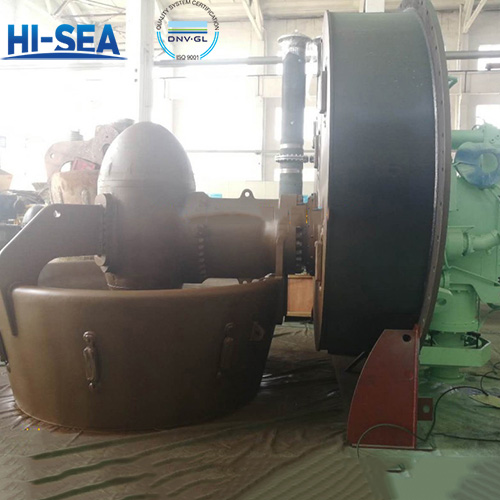
What are the driving methods of rudder propeller?
Rudder propeller, also known as azimuth thruster. An azimuth thruster is a propeller or ducted thruster used to propel and manipulate ships by rotating 360 degrees around a vertical axis through a helical gear system. Its shaft system is arranged in a Z-shape, which can simultaneously promote and manipulate the ship. Can change the direction of thrust arbitrarily, making the ship turn around in place and move back and forth freely. Its blade pitch angle changes periodically during the rotation of the blade t. When the blades are at different position angles, the angle of attack of the blade will also change with the change of position angle, causing the tangential force on the corresponding blade element of each blade to also change with the change of position angle. In this case, the component force in the axial direction cannot be cancelled out, so there will be lateral force on the blade. In this way, axial force, lateral force, and directional force can be generated as needed, and the combination of two such thrusters can achieve the propulsion and manipulation of the submersible.
Rudder propellers, also known as azimuth thrusters or podded propulsion systems, can be driven by different methods depending on the design and application. The primary driving methods are: Diesel Engine Drive, Electric Motor Drive and Hydraulic Drive.
Overview
Rudder propellers, also known as azimuth thrusters or podded propulsion systems, can be driven by different methods depending on the design and application. The primary driving methods are:
Diesel Engine Drive: A direct mechanical connection between the ship's diesel engine and the rudder propeller. This method typically involves a gearbox that transmits power from the engine to the propeller, with the ability to rotate the entire unit for steering.
Electric Motor Drive: An electric motor is used to drive the propeller directly. This motor can be powered by the ship's main electrical system, which might be generated by diesel generators. The electric motor allows for precise control of the propeller's speed and direction.
Hydraulic Drive:
In this method, a hydraulic pump driven by a diesel engine or an electric motor generates hydraulic pressure that drives a hydraulic motor connected to the propeller. The hydraulic system provides flexibility and can be advantageous in situations where space is limited or where precise control is needed.
Each of these driving methods has its own advantages and is selected based on factors like the size of the vessel, operational requirements, fuel efficiency, and environmental considerations.
For more azimuth thruster information, please click here.





